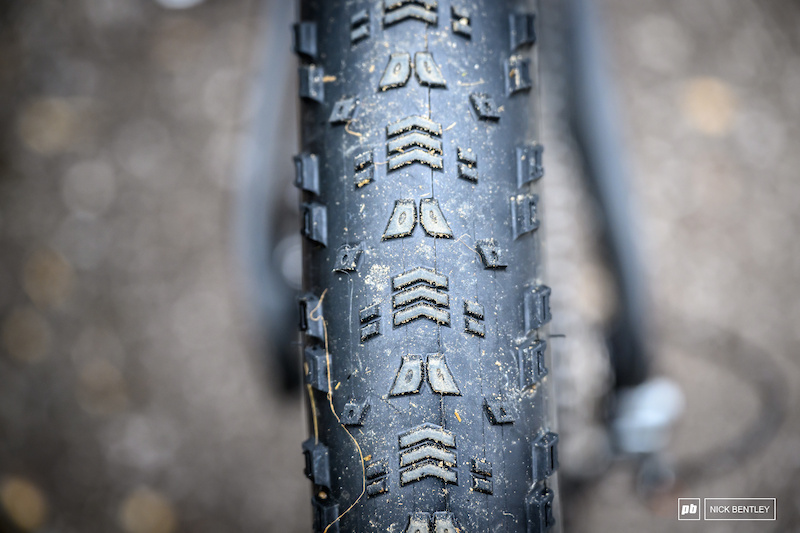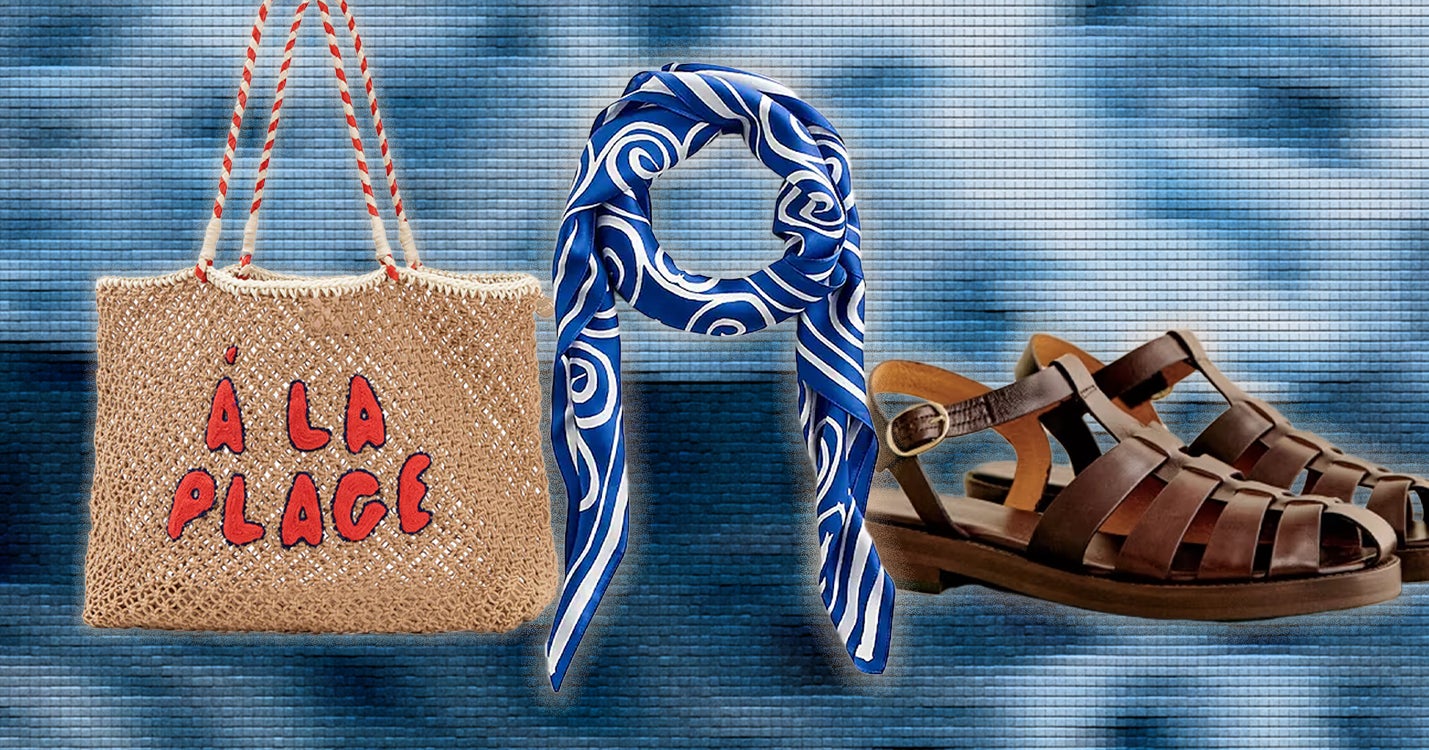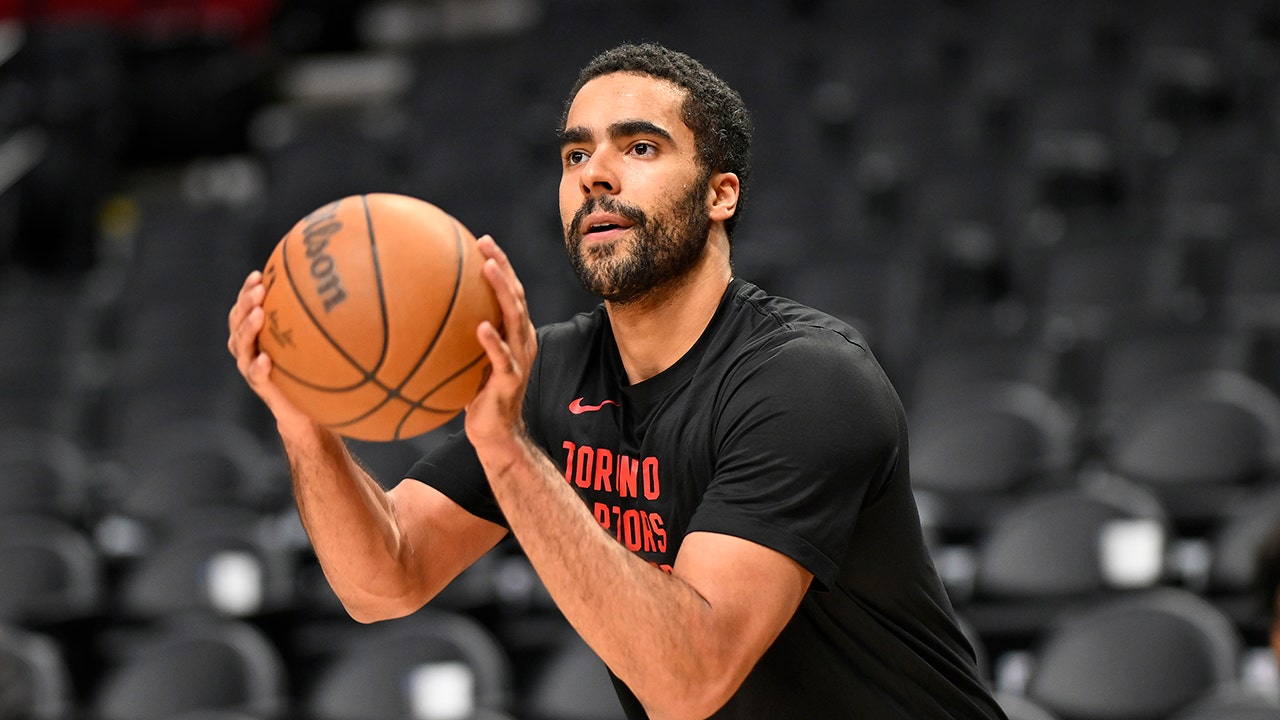World
Burning Question: The Tire Setups of World Cup XC Racers – Pinkbike

We headed out into the XC pits last week at Val di Sole to find out what riders were using when it comes to tires. With the move towards more extreme XC tracks tire choices have changed and are more important than ever. This weekend will see racers tackle the extra-technical Crans Montana course, and if it rains tire selection could be even more crucial.
Scott Race Team
 What does the team’s typical tire setup look like?
What does the team’s typical tire setup look like?
Well, our favorite tire is the Maxxis Aspen Tire, so we use it I would say 90%. Nino likes the Aspen ST. That’s a very fast rolling tire. It’s almost like a slick and we run it always with 2.4″ wide tire on a 30mm inner width rim. And pressure wise, in bar, let’s say I’m talking for the boys at the moment: 17.6 psi in the front, 18 psi in the rear. We would love to actually go even lower but, you know, it’s what keeps us on that pressure is rim tire combination. So that’s the thing.
 Is that to keep the tire inflated enough to ensure it stays on the rim?
Is that to keep the tire inflated enough to ensure it stays on the rim?
Yes exactly and stable, as well as not burping and so on.
 Tire inserts have become a bigger thing in XC. Are you guys all running tire inserts?
Tire inserts have become a bigger thing in XC. Are you guys all running tire inserts?
Actually, it’s a new thing for us. We did a lot of testing the other years, we mainly skipped it, but for the Olympic selection, just to be sure especially in Novo Mesto, for example where it’s super rocky, we decided just to run it as a safety insurance. We usually don’t run them, though.
 The weather looks a little bit changeable, we might get some rain today. Does it take a lot for the guys to change away from their favorite tire setup?
The weather looks a little bit changeable, we might get some rain today. Does it take a lot for the guys to change away from their favorite tire setup?
Not really. I mean, they train on Aspen. They know exactly what it takes. They’re always between traction and rolling resistance so that’s the main part and they always try to be on the faster side of the tires. In the end it’s their choice. We can support them. But they tell us what they want to ride and we are ready.
 Are tire pressures the same? Do they tend to fluctuate or are they pretty stuck on their pressures?
Are tire pressures the same? Do they tend to fluctuate or are they pretty stuck on their pressures?
Well, they’re in a range because as I say rim and tire has to work together, so we know our minimum and we want to be around there. So that’s the risk we take as well to get the flat or whatever.
Trek Future Racing: Ian Ackert
 What’s your typical kind of race tire setup?
What’s your typical kind of race tire setup?
Normally I just run the Maxxis Aspen. It depends on the course, but in and around 17 to 18 psi and always with a rear insert.
 Nothing ever in the front?
Nothing ever in the front?
No, I haven’t tried it yet, but I wouldn’t be opposed to it.
 It’s a bit muddy here but it’s drying up really quick. Do you tend to stay with that Aspen, or do you change it up if it does get a bit too muddy?
It’s a bit muddy here but it’s drying up really quick. Do you tend to stay with that Aspen, or do you change it up if it does get a bit too muddy?
I tend to push the tire pressure to the limit, and then if I still have no grip I would throw a beefier tire on. So I would go down even to 15 psi in the back with the insert. And then if I need to go any lower, then I put a mud tire on.
 You got 120 TPI tires on here. Is that pretty typical as well?
You got 120 TPI tires on here. Is that pretty typical as well?
Yeah, that’s what I’ve always run. I tried the lighter casing today and ended up flatting, so kind of just stick with what I run normally.
 XC World Cup courses are becoming more difficult on the descents. Does that affect some of your tire choices?
XC World Cup courses are becoming more difficult on the descents. Does that affect some of your tire choices?
I don’t think so. I think just kind of growing up in Canada, having the the West Coast riding style, you tend to just push your limit there and then it translates pretty well to the World Cup tracks.
BMC Race Team: Jordan Sarrou
 What tire setup are you going to run here?
What tire setup are you going to run here?
I use the Pirelli XC RC 2.4 and I use in between 18 psi to 20 psi.
 And you don’t run inserts either right?
And you don’t run inserts either right?
No no.
 Do you change those tires much? I mean, it might be quite muddy here. Are you thinking of making a change?
Do you change those tires much? I mean, it might be quite muddy here. Are you thinking of making a change?
It’s already dry, not dry, but it’s drying fast. So I will use only dry tires.
 When it comes to tire pressures, do you stick to those pressures or do you change it around depending on the conditions?
When it comes to tire pressures, do you stick to those pressures or do you change it around depending on the conditions?
Yeah, I change to 1 to 2 psi but not so much.
Schwalbe: Oliver Fuhrmann
 So first off, give yourself a little introduction.
So first off, give yourself a little introduction.
Hey, I’m Oliver Fuhrmann from Germany and I’m working for Schwalbe and I’m the race support manager. I’m here in Val di Sole to help the teams and try to find the best tire solution for them.
 We’re talking about XC tires today. What’s the most commonly used XC tire you’re seeing your teams use?
We’re talking about XC tires today. What’s the most commonly used XC tire you’re seeing your teams use?
It depends on the condition of the track. So if you have, like a muddy condition like here, everybody is going with a little different pattern with like higher knobs and more grip in the wet condition. We also see a tendency that riders does not really go for the fast rolling tire, but more for the grippy tire. So we are working with some different rubber compounds. We already have some aftermarket product that are ideal for wet conditions like the speed grip, that’s one way we can help the riders.
 Tire pressures are always an interesting topic for people to discuss. We’re seeing tire pressures at XC probably go lower than they’ve ever been. Do you get the feedback from the teams that they’re running low pressures?
Tire pressures are always an interesting topic for people to discuss. We’re seeing tire pressures at XC probably go lower than they’ve ever been. Do you get the feedback from the teams that they’re running low pressures?
It all comes with the size of the tire. Now everybody is screaming for bigger tires and bigger tires. So like, I don’t know, five, seven years ago everybody was talking about lightweight, small tires. Now everybody wants the biggest tires and with bigger tires you can go down with the air pressure, of course. Then it depends on how you ride, what’s your weight and which course you ride and you can go down. We have riders that go down to 11.6 psi.
 Thats really low. A lot of them are running inserts too they say that it is to fend off punctures and get to a technical zone. Do you guys do a lot of work with them on that side of things?
Thats really low. A lot of them are running inserts too they say that it is to fend off punctures and get to a technical zone. Do you guys do a lot of work with them on that side of things?
No, we don’t really recommend inserts because if you want inserts, for my understanding, the rim manufacture doesn’t give you any warranty anymore because the stress goes into places where they save weight on the product. We also believe if you want inserts, the performance of the tire will not be the same.
Some of the inserts, you can do a test by yourself if you take like a bottle and put in a valve and pump it up by one bar and put in a little bit of your insert and you see what will happen to the insert. So normally if you have like a soft insert, it shrinks. It doesn’t help you with puncture protection. The only way I see it is an advantage is if you get a cut and the sealing is not closing it, you can go and ride to the tech zone.
 XC tracks are getting more and more extreme. I’d say they’re a lot more of a tough challenge. Are you seeing riders choose different compounds, different sidewall materials?
XC tracks are getting more and more extreme. I’d say they’re a lot more of a tough challenge. Are you seeing riders choose different compounds, different sidewall materials?
Yeah, we see a lot of changes in the last five years with cross-country. Like what I said before, a couple years ago, everybody was lightweight and fast rolling stuff. Now you have almost little enduro bikes on the XC course and coming back it depends on the rider. Some riders are still thinking light, stiff, hard is the fastest way. But if you do a lot of testing with the riders and then they come to another conclusion.
Cube Factory Racing: Finn Treudler
 What tire setup are you running right now on your bike?
What tire setup are you running right now on your bike?
I’m using the Schwalbe Racing Ralph most of the time. So I think I will start with it today and see how the track is, and then maybe change to a faster one as it dries up for the weekend, but probably still on Racing Ralph.
 Is it something you change a lot? Do you tend to stay with one tire you like?
Is it something you change a lot? Do you tend to stay with one tire you like?
Usually the conditions make me change the tires, but mostly running on the Racing Ralph and I’m super happy about the performance on them. Good rolling and also super good grip.
 You also run tire inserts too and you’ve got a bigger one in the rear and a smaller one in the front is that right?
You also run tire inserts too and you’ve got a bigger one in the rear and a smaller one in the front is that right?
Yeah, we like to see how the track is to decide on that and then mostly we’re doing that setup. But sometimes we change to a big one in the front. For me it’s super important to have the inserts.
 Are you using it for like a safety blanket kind of thing to make sure that if you do get a puncture, you can get back to a technical?
Are you using it for like a safety blanket kind of thing to make sure that if you do get a puncture, you can get back to a technical?
Yeah, exactly and also it like saves the rim a bit more. So you can like bounce through the tires a bit more and can go down with the pressure.
 As the tracks are getting a bit more extreme do you think it’s going to be more important than ever now? I mean, there’s some pretty big rocks in this track.
As the tracks are getting a bit more extreme do you think it’s going to be more important than ever now? I mean, there’s some pretty big rocks in this track.
Yeah and especially I think the speed is going up as well. We’re more confident on hitting the features faster, so we need more protection.
 What tire pressures do you run?
What tire pressures do you run?
I’m usually on a bit more than a bar, so 16.6 psi in the front and 17.4 psi in the back.
 Do you change that much or are you kind of stick to one pressure?
Do you change that much or are you kind of stick to one pressure?
Usually I don’t change that much. Just like super slight changes from the track conditions.
Liv Racing: Linda Indergand
 So you’re a Maxxis team, what tires set up are you running on this bike?
So you’re a Maxxis team, what tires set up are you running on this bike?
Yes we are and we are using the Maxxis 2.4″ Aspen MaxxGrip with a 170 TPI casing.
 Both Aspens front and rear. Is that pretty typical?
Both Aspens front and rear. Is that pretty typical?
It’s almost always typical.
 It’s pretty muddy here. It’s not very Valley of the Sun this week. Do you think there’ll be a tire change to deal with the conditions?
It’s pretty muddy here. It’s not very Valley of the Sun this week. Do you think there’ll be a tire change to deal with the conditions?
If we change, it would be to Severe 2.25″ and we would probably run those on a 25mm rim to as opposed to the 30 for the Aspen tire.
 What is the reason behind the rim change?
What is the reason behind the rim change?
It’s to keep the volume of the tire for what it was designed around and also simply for clearance in the frame. If this mud in the grass is going to get sticky. I think these grass sections is what’s going to be muddy.
 This field section out here, the start finish straight and stuff. What tire pressures is she running?
This field section out here, the start finish straight and stuff. What tire pressures is she running?
So we run 0.9 bar in the front and 1.0 in the rear. I think that is basically 13 psi in the front and 14.5 in the rear.
 Lower than I think people will be expecting to hear. Does that change a lot?
Lower than I think people will be expecting to hear. Does that change a lot?
If Linda feels that she’s kissing the rim we may go up point one bar, you know, or whatever that equates to.
 You’re running tire inserts front and rear, right. Is that all the time?
You’re running tire inserts front and rear, right. Is that all the time?
That’s typically all the time. There’s a good chance, the short course is always just completely happening on grass. We could go no tire inserts there, but usually for these lower pressures for keeping air in the tires and also if there is a flat, it makes pedalling to the tech zone much easier.
Giant: Jens Schuermans
 What tires is Jens running for this? Are these going to be what he’s running for the race?
What tires is Jens running for this? Are these going to be what he’s running for the race?
If it dries up, yeah. He tends to prefer the Rekon race front and the Aspen rear.
 Does he really tweak around with it at all?
Does he really tweak around with it at all?
He doesn’t usually. We’ll play around with tire pressure but this tends to be his race setup.
 What’s the thought process there when it’s really rainy? Do you have a wet setup that you just jump straight to?
What’s the thought process there when it’s really rainy? Do you have a wet setup that you just jump straight to?
Yeah, we’ll go to Severes. If the mud’s really bad we do also have the Maxxis Beaver. It’s a little narrower and a little more open tread.
 Is there a big kind of gap between the tires, or is it pretty easy to cross over? Looking at the Severe from here, there’s not a huge jump in tread between the Aspens and the Severe. It’s the mud tire that’s really a big jump, is that right?
Is there a big kind of gap between the tires, or is it pretty easy to cross over? Looking at the Severe from here, there’s not a huge jump in tread between the Aspens and the Severe. It’s the mud tire that’s really a big jump, is that right?
Yes, it’s the mud tire is a really big jump. It’s a little more open. It doesn’t pack up compared to Rekon race, which would pack up much lower knobs as well. But yeah, if it gets really muddy, we’ll switch over to that.
 Tire pressures, what’s his normal race setup?
Tire pressures, what’s his normal race setup?
He’s normally 15.9 psi in the front and with an insert in the back he’ll do 16.6 psi.
 We see the downhill guys change up tire pressures quite a lot, does Jens change his?
We see the downhill guys change up tire pressures quite a lot, does Jens change his?
Really more based on conditions. So if we end up changing to a slightly narrower tire, pressure will go up a little bit.










